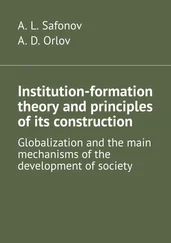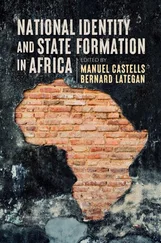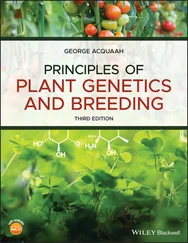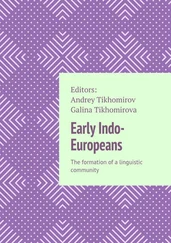Planet Formation and Panspermia
Здесь есть возможность читать онлайн «Planet Formation and Panspermia» — ознакомительный отрывок электронной книги совершенно бесплатно, а после прочтения отрывка купить полную версию. В некоторых случаях можно слушать аудио, скачать через торрент в формате fb2 и присутствует краткое содержание. Жанр: unrecognised, на английском языке. Описание произведения, (предисловие) а так же отзывы посетителей доступны на портале библиотеки ЛибКат.
- Название:Planet Formation and Panspermia
- Автор:
- Жанр:
- Год:неизвестен
- ISBN:нет данных
- Рейтинг книги:3 / 5. Голосов: 1
-
Избранное:Добавить в избранное
- Отзывы:
-
Ваша оценка:
- 60
- 1
- 2
- 3
- 4
- 5
Planet Formation and Panspermia: краткое содержание, описание и аннотация
Предлагаем к чтению аннотацию, описание, краткое содержание или предисловие (зависит от того, что написал сам автор книги «Planet Formation and Panspermia»). Если вы не нашли необходимую информацию о книге — напишите в комментариях, мы постараемся отыскать её.
Audience
Planet Formation and Panspermia — читать онлайн ознакомительный отрывок
Ниже представлен текст книги, разбитый по страницам. Система сохранения места последней прочитанной страницы, позволяет с удобством читать онлайн бесплатно книгу «Planet Formation and Panspermia», без необходимости каждый раз заново искать на чём Вы остановились. Поставьте закладку, и сможете в любой момент перейти на страницу, на которой закончили чтение.
Интервал:
Закладка:
[3.40] Lenardic, A. and Seales, J., Different is more: the value of finding an inhabited planet that is far from Earth2.0. Astrobiology , 19, 1398–1409, 2019.
[3.41] Ligotti, T., The Conspiracy Against the Human Race , Viking Press, New York, 2010.
[3.42] Lineweaver, C.H., An estimate of the age distribution of terrestrial planets in the universe: quantifying metallicity as a selection effect. Icarus , 151, 307–313, 2001.
[3.43] Lineweaver, C.H., Fenner, Y., Gibson, B.K., The Galactic Habitable Zone and the age distribution of complex life in the Milky Way. Science , 303, 59–62, 2004.
[3.44] Lukianoff, G. and Haidt, J., The Coddling of the American Mind: How Good Intentions and Bad Ideas Are Setting Up a Generation for Failure , Penguin Publishing Group, New York, 2018.
[3.45] Mash, R., Big numbers and induction in the case for extraterrestrial intelligence. Philosophy Sci ., 60, 204–222, 1993.
[3.46] Mautner, M.N., Seeding the Universe with Life: Securing Our Cosmological Future , Legacy Books, Christchurch, 2004.
[3.47] Mautner, M.N., Life in the cosmological future: Resources, biomass and populations. J. Br. Interplanet. Soc ., 58, 167–180, 2005.
[3.48] Mautner, M. and Matloff, G.L., A technical and ethical evaluation of seeding nearby solar systems. J. Br. Interplanet. Soc ., 32, 419–423, 1979.
[3.49] McKay, C.P. and Marinova, M.M., The physics, biology, and environmental ethics of making Mars habitable. Astrobiology , 1, 89–109, 2001.
[3.50] Olson, S.J., Life-hostile conditions in the early universe can increase the present-day odds of observing extragalactic life. arXiv preprint arXiv:1704.04125, 2017.
[3.51] O’Neill, O., Environmental values, anthropocentrism and speciesism. Environ. Values , 6, 127–142, 1997.
[3.52] Persson, E., The moral status of extraterrestrial life. Astrobiology , 12, 976–984, 2012.
[3.53] Pross, A., What is Life?: How chemistry becomes biology , Oxford University Press, Oxford, 2016.
[3.54] Rummel, J.D., Planetary exploration in the time of astrobiology: protecting against biological contamination. Proc. Natl. Acad. Sci ., 98, 2128–2131, 2001.
[3.55] Sagan, C. and Salpeter, E.E., Particles, environments, and possible ecologies in the Jovian atmosphere. Astrophys. J. Suppl. Ser ., 32, 737–755, 1976.
[3.56] Sandberg, A., Armstrong, S., Ćirković, M.M., That is not dead which can eternal lie: the aestivation hypothesis for resolving Fermi’s paradox. J. Br. Interplanet. Soc ., 69, 406–415, 2016.
[3.57] Sadlok, G., On a hypothetical mechanism of interstellar life transfer trough nomadic objects. Orig. Life Evol. Biosph ., 50, 87–96, 2020. in press.
[3.58] Taylor, D. and Henry, W., The High Frontier: The Untold Story of Gerard K. O’Neill [movie] , Multiverse Media, 2019, https://gerardoneillthemovie.com/.
[3.59] Trivers, R.L., The Social Evolution , Benjamin Cummings, Menlo Park, 1985.
[3.60] Vermeij, G.J., Historical contingency and the purported uniqueness of evolutionary innovations. Proc. Natl. Acad. Sci ., 103, 1804–1809, 2006.
[3.61] Vibert Douglas, A., The Life of Arthur Stanley Eddington , Thomas Nelson and Sons Ltd, London, 1956.
[3.62] Westfahl, G., Islands in the Sky: The Space Station Theme in Science Fiction Literature , Wildside Press, Rockville, Maryland, 2009.
[3.63] Wright, J.T., Dyson Spheres. Serbian Astron. J ., 200, 1–18, 2020.
[3.64] Zackrisson, E., Calissendorff, P., González, J., Benson, A., Johansen, A., Janson, M., Terrestrial planets across space and time. Astrophys. J ., 833, #214, (12 pp), 2016.
[3.65] Zuckerman, B. and Hart, M.H. (Eds.), Extraterrestrials. Where are they? , Cambridge University Press, Cambridge, 1995.
[3.66] Ward, P.D. and Brownlee, D., Rare Earth: Why Complex Life Is Uncommon in the Universe , Springer, New York, 2000.
[3.67] Watts, P., Blindsight , Tor Books, New York, 2006.
Email : mcirkovic@aob.rs
1 1 Quoted in [3.61], pp. 122-3.
2 2 A recent accessible presentation of the same argument was given by Addy Pross in his fine neo-Schrödingerian book What is Life? [3.53].
3 3 Note that Fry’s book appeared almost simultaneously with much less interesting and important, but way more talked about Rare Earth [3.66]. For comparison, as of this writing (December 2020), Google Scholar records 290 citations of The Emergence of Life against more than 900 for Rare Earth.
4 4 This does not apply in the future direction only, although for obvious reasons we need to worry most about that direction and the future consequences of our decisions made under the influence of chronocentric beliefs. An obvious effect of chronocentrism toward the past is visible in historical sciences and especially in the abuses of history often committed by zelous political do-gooders and various political corectness advocates (for critical assessments see, e.g., [3.33, 3.44]). The outright crazy versions of chronocentrism comprise rejection of scientific/literary/artistic/philosophical canon due to the “whiggish” reading of history: today’s standards being nonsensically applied to the past. This tallies well with the actual social-costructivist, neomarxist idiotism. “Don’t read Plato, he was a slave holder!”
5 5 [3.3], p. 118.
6 6 There are exceptions to this view sometimes considered in the domain of science fiction literature. For instance, in his brilliant novel Blindsight, Peter Watts describes how the human kind of intelligence might be an exception, rather than the rule, among all star-faring species [3.67]. We cannot discuss this fascinating and disturbing scenario here in more detail, but see [3.15].
7 7 Note that this conclusion applies to epistemology and philosophy of science; extrascientific motivation clearly present in the rejection of the continuity thesis by creationists does not and cannot invalidate this heuristic usage, since their supernaturalist metaphysics lies outside science [3.28, 3.31].
8 8 Not everyone agrees, as expected. Although even most non-biocentric moral philosophers would agree that an inhabited planet possesses some additional value, even if purely instrumental, in comparison to a dead one, a small but surprisingly vocal group of philosophical pessimists and anti-natalists has argued for a diametrically opposite view. In a cartoonishly simplified form, life (both human and non-human) is mainly suffering and so is of negative net value, and human duty is to actually prevent its proliferation and procreation. Drawing on some traditional sources, like Buddhism and Schopenhauer’s philosophy, some of the modern representatives of this view have been Peter Wessel Zappfe, Emil Cioran, David Benatar, Ray Brassier, and Eugene Thacker (a popular overview is given by Thomas Ligotti in [3.41]).
9 9 Notably, the temperature at which living/intelligent systems operate is perhaps the key factor in both subjective time flow and in overall evolution, as per Dyson’s scaling hypothesis [3.23]. See also [3.56].
10 10 A popular version of this cop-out is to state that such thinking invariably belongs to the domain of science fiction. What a conservative mind fails to perceive is that there is no sharp boundary between the two discourses; what has been a science fiction concept of chain reaction for H. G. Wells or smart dust for Stanislaw Lem has long ago smoothly transitioned into the scientific/technological discourse. See [3.15] for an extended discussion of this fascinating topic.
11 11 Admittedly, some additional assumptions are required here. Notably, the cosmologically allowed future will last longer than the history of the universe so far—which is firmly confirmed by physical eschatology [3.2]. Also, the conclusion hinges on the, possibly also geocentric, assumption that a typical extraterrestrial biosphere is a system of many individual life forms as agents—and not a single biospheric-size superorganism as, for example, Lem’s Solaris (see Lem [3.39]).
Читать дальшеИнтервал:
Закладка:
Похожие книги на «Planet Formation and Panspermia»
Представляем Вашему вниманию похожие книги на «Planet Formation and Panspermia» списком для выбора. Мы отобрали схожую по названию и смыслу литературу в надежде предоставить читателям больше вариантов отыскать новые, интересные, ещё непрочитанные произведения.
Обсуждение, отзывы о книге «Planet Formation and Panspermia» и просто собственные мнения читателей. Оставьте ваши комментарии, напишите, что Вы думаете о произведении, его смысле или главных героях. Укажите что конкретно понравилось, а что нет, и почему Вы так считаете.












